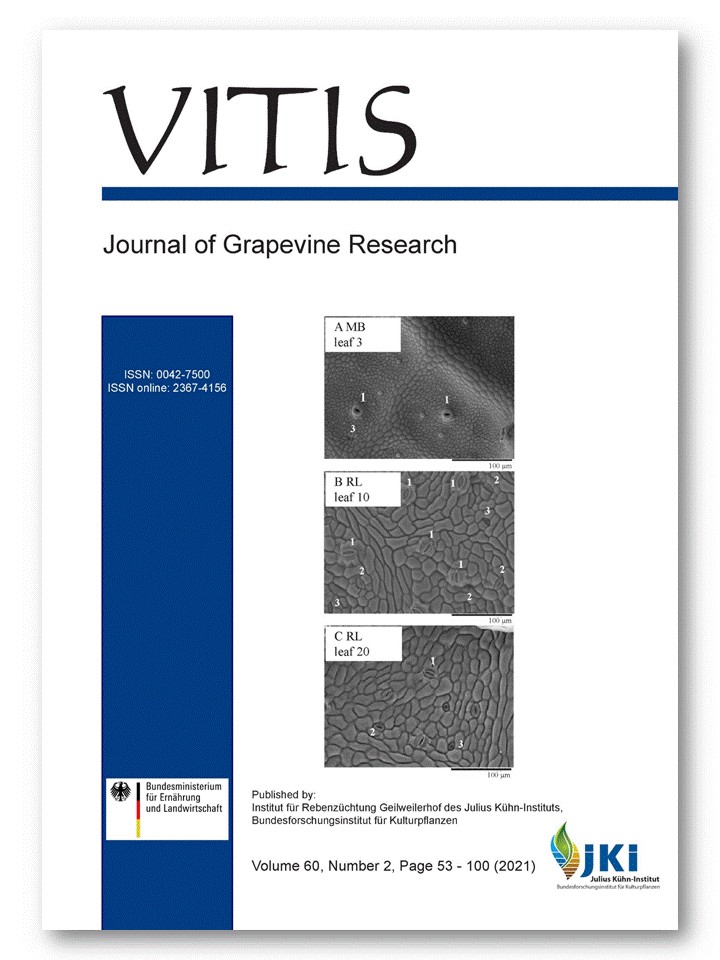Effects of salinity on potassium absorption and expression of K+transporter genes at different concentrations of potassium in Grape (Vitis vinifera L.)
DOI:
https://doi.org/10.5073/vitis.2021.60.77-84Abstract
Grapevine is classified as a moderately sensitive plant to salinity. Hydroponically three grape genotypes (Vitis vinifera L.) were treated with different concentrations of KCl (0.1, 0.3, 0.5, 1, 5, 10 mM KCl) and NaCl (0, 25, 50,100 mM NaCl). Cl- and Na+ contents were significantly increased in different plant organs of all the genotypes under salinity. In this study, sensitive ('GhezelUzum'), tolerant ('Gharashani') and semi-resistant ('Chawga') grape genotypes were selected based on screening experiments under salinity. 'Gharashani' accumulated higher Na+ and Cl- in roots compared to the sensitive one. 'Chawga' accumulated high K+ similar to Na+ in root and shoot even at high salinity. Km calculation for K+ and Na+ uptake in root and shoot of 'Chawga' showed that K+ and Na+ compete to enter the plant through roots. Two KUP/KT/HAK-type potassium transporters are expressed highly in the grapevine during stress. VvK1.1 could play a major role in K+ loading into grape tissues. The expression of VvKUP1 and VvKUP2 transporters and VvK1.1 channel in roots of 'Chawga' genotype increased significantly (P < 0.05) at different KCl concentrations under salinity stress. Our results showed a significant difference between tolerant and sensitive genotypes and highlighted a strong relationship between the accumulation of specific transcripts and the degree of salinity tolerance.
Downloads
Published
Issue
Section
License
Copyright (c) 2021 The Author(s)

This work is licensed under a Creative Commons Attribution 4.0 International License.
The content of VITIS is published under a Creative Commons Attribution 4.0 license. Any user is free to share and adapt (remix, transform, build upon) the content as long as the original publication is attributed (authors, title, year, journal, issue, pages) and any changes to the original are clearly labeled. We do not prohibit or charge a fee for reuse of published content. The use of general descriptive names, trade names, trademarks, and so forth in any publication herein, even if not specifically indicated, does not imply that these names are not protected by the relevant laws and regulations. The submitting author agrees to these terms on behalf of all co-authors when submitting a manuscript. Please be aware that this license cannot be revoked. All authors retain the copyright on their work and are able to enter into separate, additional contractual arrangements.



